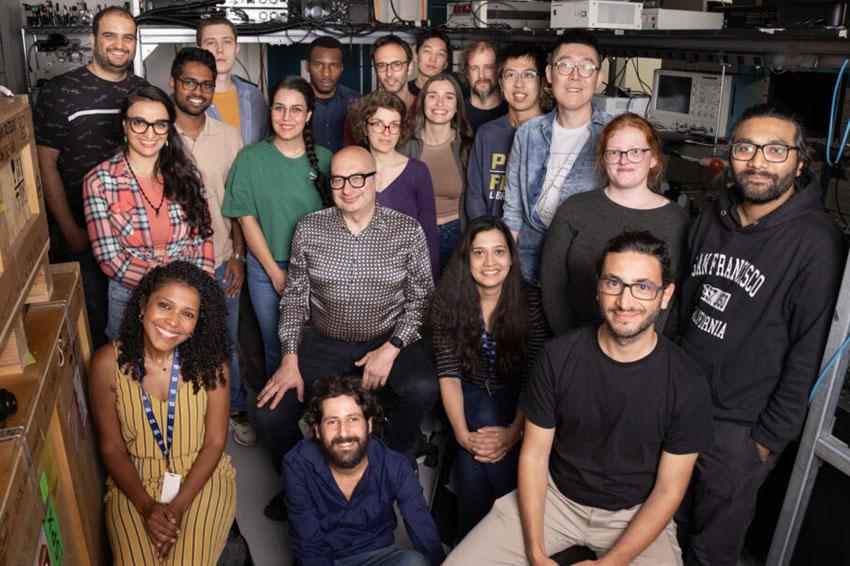7.4 million dollars to make advances in photonics
06.09.2024 - Major grants go to three projects making advances in sectors such as quantum, communications, and biomedicine.
Three promising projects led by INRS professors will receive 7.4 million dollars in funding over the next few years. These initiatives aim to enhance quantum communication, computing, and sensing capabilities by integrating photonics and quantum technologies. The projects, all of which are university-industry partnerships, will be funded by the Natural Sciences and Engineering Research Council of Canada (NSERC) through its Alliance Advantage grants program.
Alliance Advantage grants support initiatives that involve collaboration between academia and partner organizations in the private, public, or non-profit sectors. The purpose of these partnerships is to quickly find impactful applications for researchers’ discoveries with real, tangible benefits for Canada.
The “Scalable solid-state semiconductor platform for on-chip quantum communication” project will receive a grant of 1.17 million dollars over four years. Along with colleagues from McGill University and Polytechnique Montréal, the project is led by EMT Research Centre professor Sharif Sadaf, nanophotonics specialist and holder of the Canada Research Chair in III-nitride Compound Semiconductor Nanostructures and Devices. The team’s goal is to develop a platform of semiconductors called epitaxial quantum dots (QDs) for efficient quantum light generation. These cutting-edge semiconductors will make it possible to generate and manipulate quantum photon states. Four industrial partners will be working closely on the project: Xanadu, CMC Microsystems, OptoElectronic Components, and Numana.
EMT Research Centre professor Roberto Morandotti, nonlinear optics specialist and holder of the Canada Research Chair in Smart Programmable Photonics, is heading up the “Advanced quantum applications via complex states in integrated and meta optics (Aqua)” project. It will receive five million dollars over five years. The project aims to develop and commercialize quantum communication, imaging, and sensing technologies based on integrated photonic processing platforms and techniques. Collaborators include McGill University, the University of Toronto, the University of Alberta, Université de Sherbrooke, and Swinburne University of Technology, in addition to the industrial partners CMC Microsystems, Combs, Enablence, Few-cycle, Ki3 Photonics Technologies, OptoElectronic Components, Pasqal, SpectraCann, and Xanadu Quantum Technologies.
Lastly, the “High-dimensional photonic systems for quantum information processing” project has received funding totalling 1.275 million dollars over four years. It is also under the direction of Roberto Morandotti, in collaboration with EMT Research Centre professor José Azaña, who held the Canada Research Chair in Ultrafast Photonic Signal Processing until 2021.
The project’s industrial partners are Ki3 Photonics Technologies and OptoElectronic Components, which specialize in quantum technology innovation and commercialization. Supported by a complementary grant from Prima Québec (the advanced materials research and innovation hub), the group’s work aims to demonstrate the feasibility of quantum internet.
To achieve this, professors Morandotti and Azaña and their team intend to develop and commercialize a scalable quantum photonic processor based on complex photonic states. Their aim is to implement high-dimensional quantum computing operations and algorithms and set up a test bed for secure quantum communication over fiber-optic links.
Contact
Institut national de la recherche scientifique (INRS)
490, rue de la Couronne
Quebec City
Quebec, Canada
+1 418 654-3838







